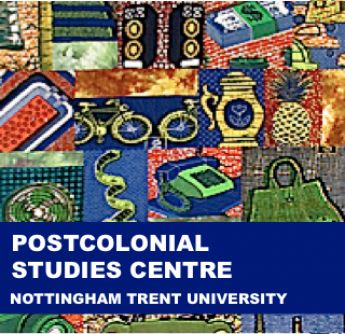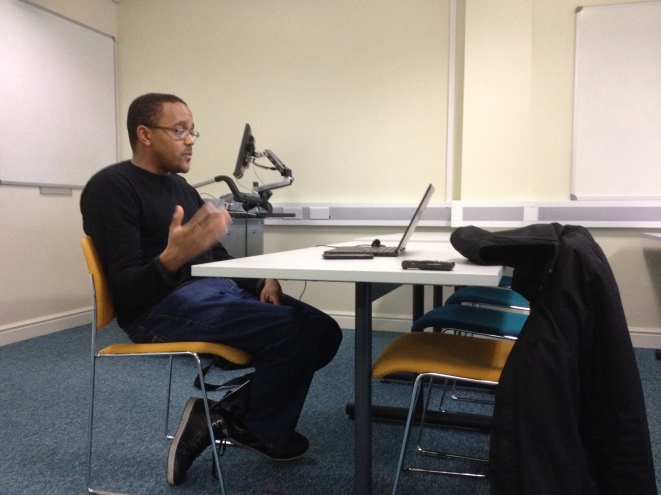The Spatial Enlightenment of The Senses: Belief and Faith, The Social Place of Worship, Prayer and Meditation
Do people make places or do places make people?
by Bogumila Korba and Robyn Evans
26 November 2015
Starting in July 2015, we undertook a SPUR (Scholarship Project for Undergraduate Research) in partnership with NTU and the head of the Photography degree Max Kandhola, who had proposed the project.

The project was an exploration of Sikh and Muslim places of worship in Nottingham. Through our academic and visual research, we discovered the relationship between faith and places of worship within Nottingham’s community and surroundings. Mapping locations, doing fieldwork and historical research into human geography and postcolonial migration, we looked at issues of belonging and adapting, whilst drawing upon ideas of the ‘other’.
Eventually, we went into the different places to gain further information and, of course, to take photographs! Working with the local communities and religious leaders, we intended to photograph the interior and exterior of each building in order to represent the communities who live near, and pray within them. Our main goal was to capture the aura of each site in order for a viewer who has never personally experienced such a place to be able to grasp an idea of it.
An integral part of our project was the fact that we were not interested in photographing people, just the architecture and feeling of each place of worship and its surroundings. We wanted to capture the essence of a building, shaped by a community without directly photographing the community.

Jamia Masjid Sultania Mosque

Sri Nabh Kanwal Raja Sahib Ji Gurdwara
Nottingham is a multicultural city with population of 310,837 (2011 census). There are approx. 27,000 Muslims and 4,312 Sikhs. There are 25 official worship sites for Muslim groups and seven Sikh Gurdwaras. The Muslim community of Nottingham predominantly originates from Pakistan and the Sikh population originates mainly from India (2011 census). Both groups came to UK in the 1950s and 60s, part of a countrywide influx of postcolonial migrants.
When these groups migrated, they brought traditions, values, culture, religion and language. After over 50 years, their presence has become embedded into modern society but is still visibly distinct. The languages, traditional forms of dress, foods and architecture have transformed Nottingham into a colourful, some might say ‘exotic’, but most importantly a very interesting European City.

Madni Masjid
From the very beginning of our research, an astonishing fact was discovered – the human geography of Nottingham is divided into areas predominated by religious groups. This fact is not always obvious at first sight.

The question: ‘Do places make people or do people make places?’ was constantly on our minds. Only one building was purposefully built to be a site of worship – the Nurani Jami Masjid Mosque in St. Ann’s, which is also the biggest mosque in Nottingham and a part of it is still under construction. The rest of the religious buildings tended to be converted buildings, a mosque that was previously a pub, many converted shops, warehouses and schools, and both Mosques and Gurdwaras, which were, previously churches.
Sites of worship would be built for the need of the community, some buildings more basic and sparse than others, some virtually empty most days, others a hub for the community – providing resources and services for the surrounding communities, the people shaped and made the place.

Jamia Masjid Sultania Mosque

Surrounding area
Gaining access to these sites proved problematic on some occasions. Many places immediately declined our request to gain entry. One on particular occasion we came up against an individual who became both defensive and rude at the sight of us – this is something which we realised was inevitable when we started this project but it was still unnerving. Another problem we frequently came up against was being subject to a strong bias throughout conversation, something that made it hard to remain neutral and professional. Language and educational barriers made it near impossible sometimes to ask the questions we desired to have answered.


Our project coincided with Ramadan, which meant the mosques were bustling with life and busy which was amazing to see but did also mean that we struggled to get access to all of them. So having access to some of them, despite the inconvenient time, was great and very interesting but also an enlightening experience for us.
Overall, the project produced over 100 images and a contextual research file. We were enlightened by the experience of being welcomed into a community we had never previously encountered. Being presented with multiple opportunities within the community and the art world following the end of project has also been both exciting and rewarding.

Jamia Masjid Sultania Mosque

Jamia Masjid Sultania Mosque

Pakistan centre

sri guru singh gurdwara
© Photographs and Text: Bogumila Korba and Robyn Evans, 2015




























